Archaeological Park at Sunset
Paquimé, Casas Grandes, Chihuahua, Mexico, 1996 | 55.5 x 65.5 x 1.75 | $2,800
Paquimé, (also known as Casas Grandes) is a major multistoried adobe pueblo in northern Chihuahua, Mexico. Reaching its apex during the 13th – 15th centuries, the Casas Grandes culture at Paquimé thrived on agriculture and trade. Paquimé has been designated a World Heritage site by UNESCO. This view is to the southeast at sunset across the Rio Casas Grandes valley.
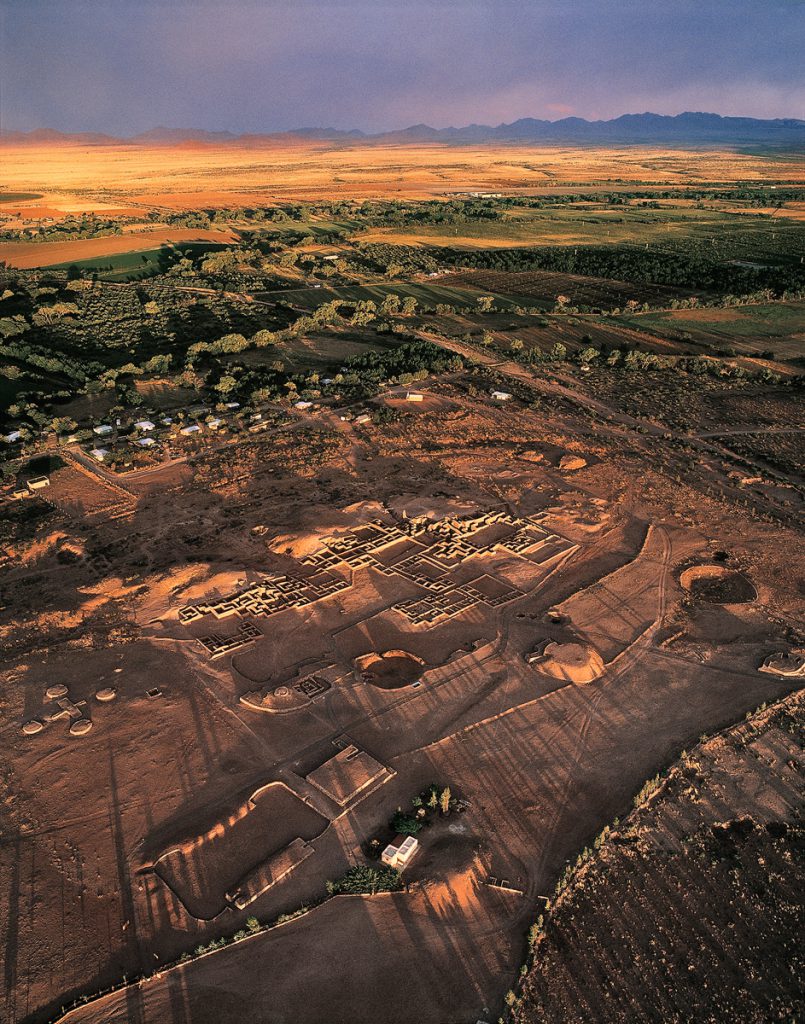
So, if we start talking about landscape as the interaction between communities and their environments, then we also recognize that the landscape has many layers across physical spaces, as well as over time. Then archaeologists can begin to recognize that the dialogue of past isn’t just ours to tell.
—Kurt Anschuetz, anthropologist
Rio Grande Foundation for Communities and Cultural Landscapes
Archaeological Park with Unexcavated Mounds
Paquimé, Casas Grandes, Chihuahua, Mexico, 1996 | 55.5 x 65.5 x 1.75 | $2,800
The massive site of Casas Grandes, also known as Paquimé, has undergone major excavations and stabilization, although almost half of the site remains unexcavated. (Note the uneven earthen mounds along the right side of the stabilized portion of the site). This view is to the north, with the Rio Casas Grandes valley at upper right, and the modern village of Casas Grandes at upper left.
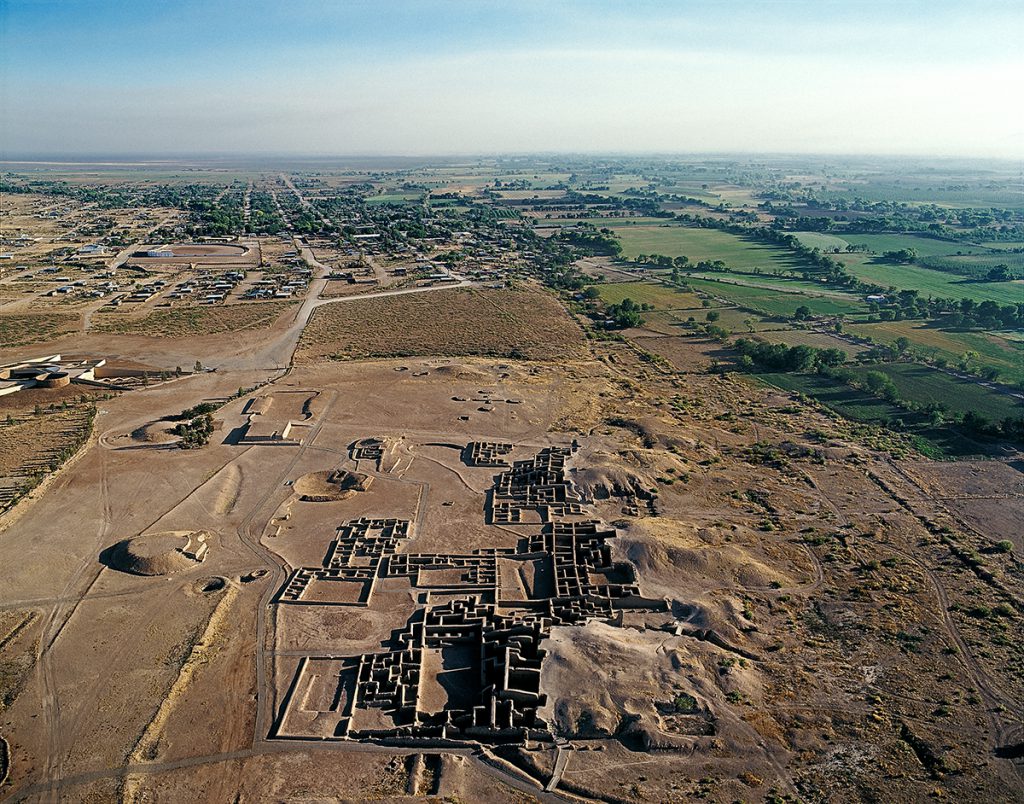
When I visit sites I think about community, how different my life is in relation to how people once lived. Ancient people lived in a community. I value that because it’s so different from my life today where I don’t even know my neighbors.
—Patrick D. Lyons, Associate Director
Arizona State Museum
Excavated Spiral-walled Compound
Summit area, Cerro de Trincheras, Sonora, Mexico, 1996 | 55.5 x 65.5 x 1.75 | $2,800
Low overhead view of “El Caracol” or “The Snail,” the spiral-walled unroofed structure on one of the summit flats of Cerro de Trincheras.
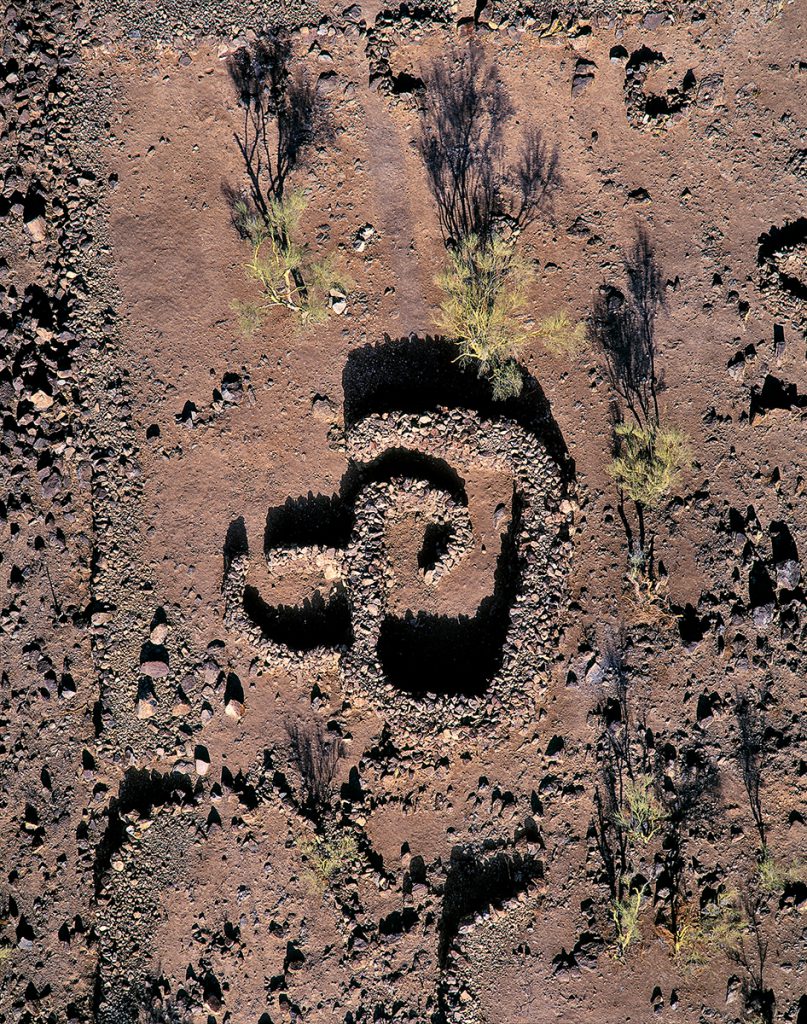
Reconstructed Cardinally Oriented Mounds
Mound of the Cross, Paquimé, Casas Grandes, Chihuahua, Mexico, 1996 | 33.5 x 39 x 0.875 | $975
Low overhead view of the reconstructed cardinal cross mounds at Paquimé, pueblo ruins at Casas Grandes, Chihuahua, Mexico. Although its exact function is unknown, it is one of numerous examples of public ritual architecture at the site. Bottom of frame is east.
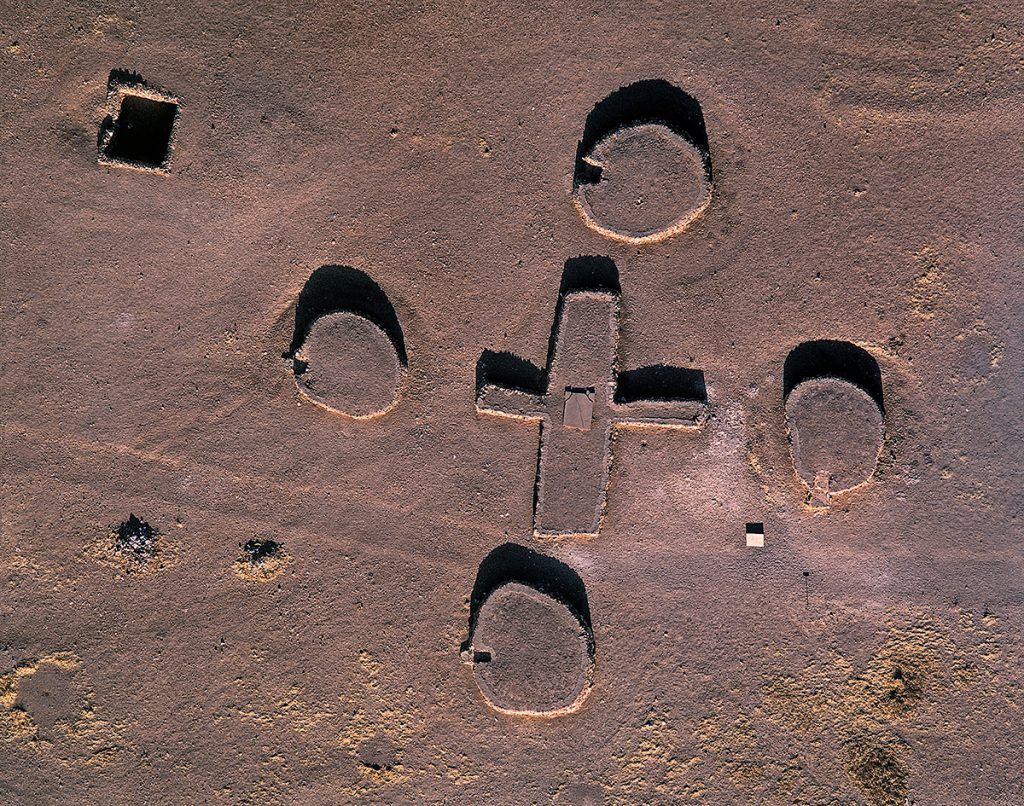
I am always somewhat excited, I always like being on an archaeological site. It is a visceral feeling of being some place where someone was before—a place of value.
—Jeffrey Altschul, archaeologist and president of Statistical Research, Inc.
Roomblocks with Reconstructed Adobe Walls
Central Complex, Paquimé, Casas Grandes, Chihuahua, Mexico, 2000 | 43 x 53.5 x 1.75 | $1,950
Overhead view of the reconstructed and stabilized adobe pueblo ruins of Paquimé in northern Chihuahua, Mexico. The remains of macaw breeding pens are clearly visible in the center of this image. Bottom of frame is east.
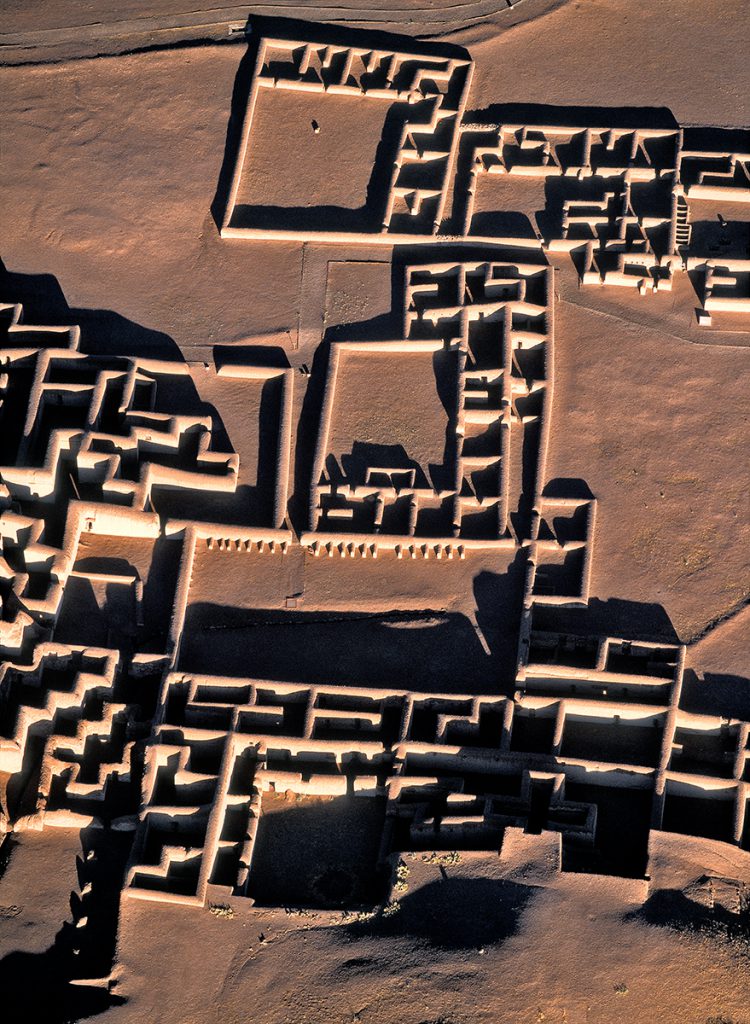
Severe Erosion in Archaeological Landscape (Detail)
Along the Río Boquillas, Sonora, Mexico, 1996 | 55.5 x 65.5 x 1.75 | $2,800
La Playa archaeological site in Sonora, Mexico, where features and artifacts cover ten square kilometers along the margins of the Río Boquillas. The majority of the site dates to the Early Agricultural period (1500 BC to AD 200). Surface erosion is severe and extensive.

Severe Erosion in Archaeological Landscape
Along the Rio Boquillas, Sonora, Mexico, 1996 | 55.5 x 65.5 x 1.75 | $2,800
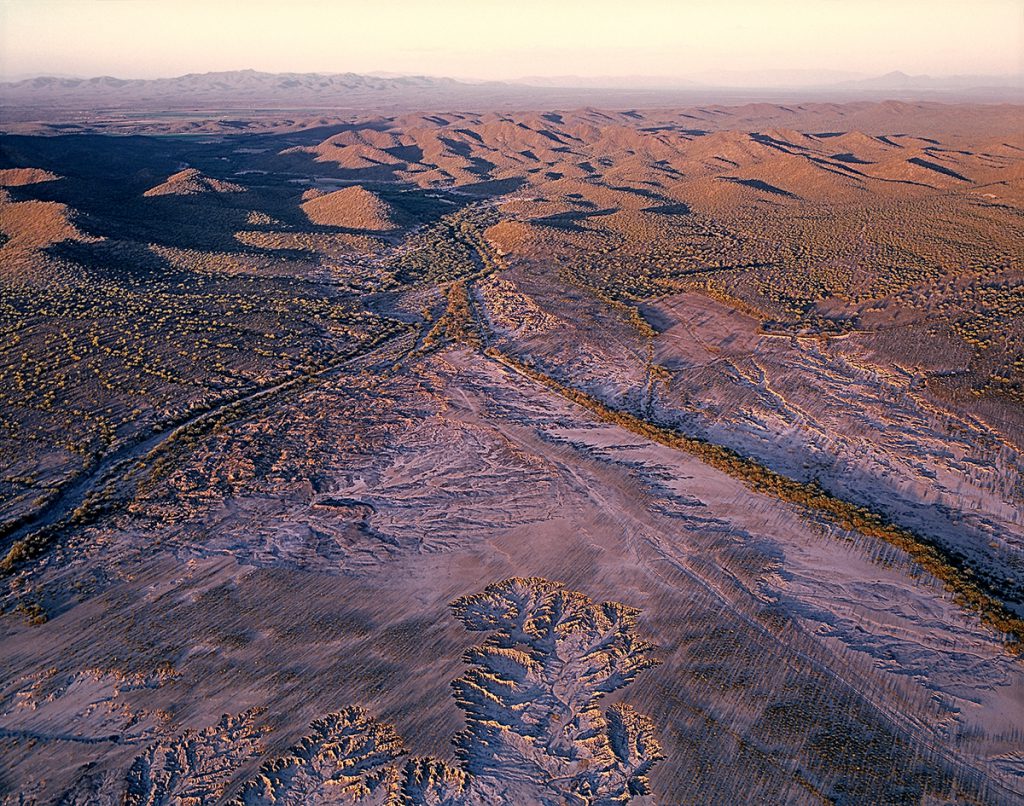
Stone Terraces on Cerro at Sunset
Cerro Juanaqueña, Janos, Chihuahua, Mexico, 2000 | 32.125 x 39 x 0.875 | $975
An Early Agricultural period site dating to approximately 1150 BC in the Chihuahuan Desert. A series of terraces built into the sides and top of a 140-meter-high basalt hill provided living space for the prehistoric inhabitants. View is to the west-northwest at sunset, with the fields of the Rio Casas Grandes valley below the hill.
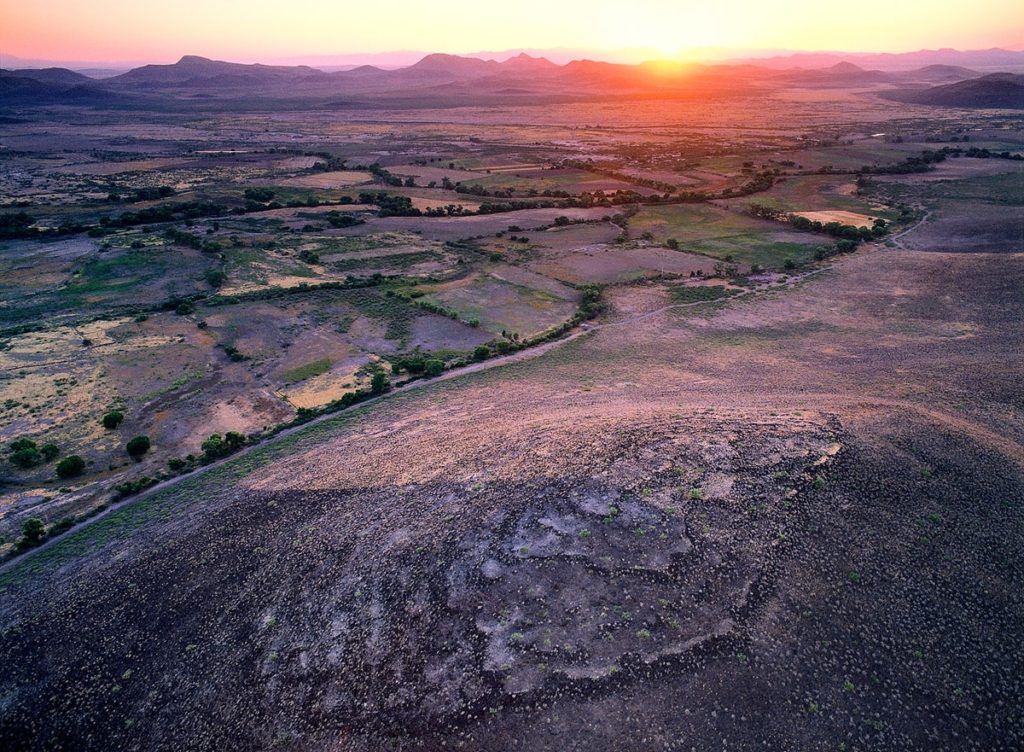
The biggest interest in archaeology for me—although it’s all interesting—is how the land used to be, so we can maintain it for future generations. We’re modern people, yes, but we’re also trying to live off the land. And if you live off the land, you have to appreciate it or otherwise you might as well sell-off. We appreciate the land—all the five generations of my family and the Native Americans before us.
—Andrew Smallhouse, rancher and farmer
Redington, Arizona
Stone Terraces on Summit with Livestock
Cerro Vidal, Chihuahua, Mexico, 2000 | 43 x 53.5 x 1.75 | $1,950
Cerro Vidal in northern Chihuahua, Mexico. The pattern of concentric rock walls ringing the summit of low volcanic hills, or cerros, is characteristic of trincheras archaeological features found in the Rio Casas Grandes region. The white dots in this photo are grazing livestock.
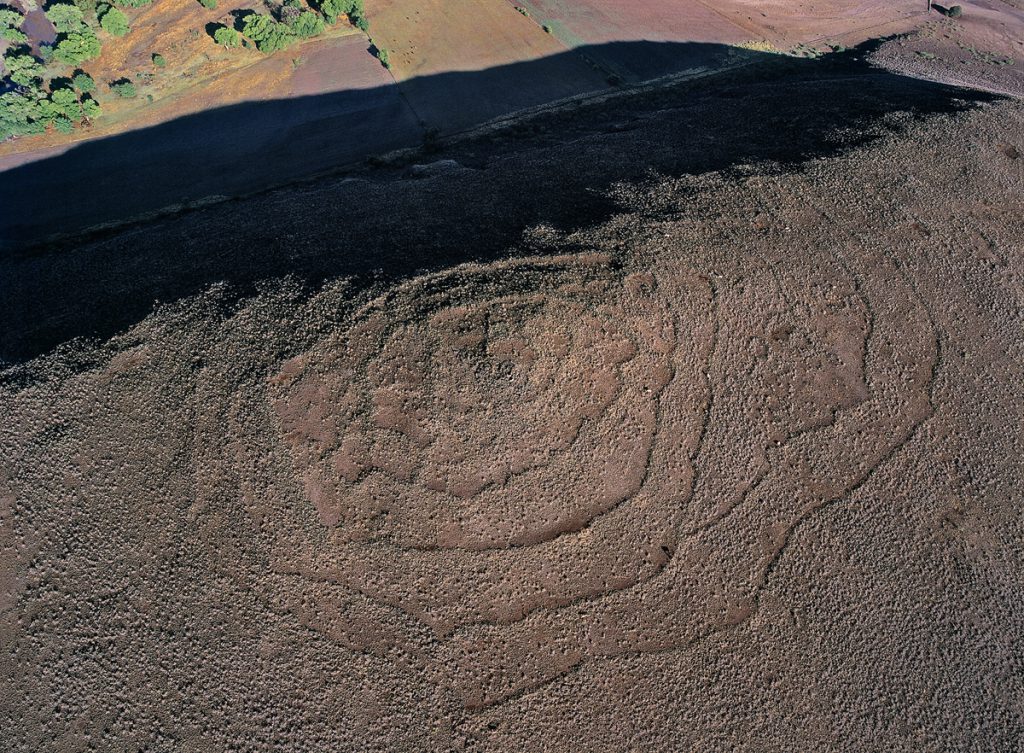
I would say that archaeology is like music and the arts in the sense that the ultimate fate of man does not rest on archaeology. It’s an enriching experience. It tells us about the past as a species and maybe specific times and places. It shows what we’ve done to get where we are today. It offers people a chance to know the past in different terms—it’s not religion or a simple history book. It is an issue of enrichment.
—Bruce Huckell, senior research coordinator
Maxwell Museum of Anthropology
Volcanic Hill with Terraces under Rainbow
Cerro de Trincheras, Sonora, Mexico, 1996 | 55.5 x 65.5 x 1.75 | $2,800
A monsoon rain shower descends on Cerro de Trincheras as evening sunlight floods in from the west. In this view to the southeast, no modern structures are visible, while the prehistoric stone terraces visibly striate the flanks of the main hill. Dated to between AD 1300 and 1500, as many as 2,000 people may have lived at this site at one time.
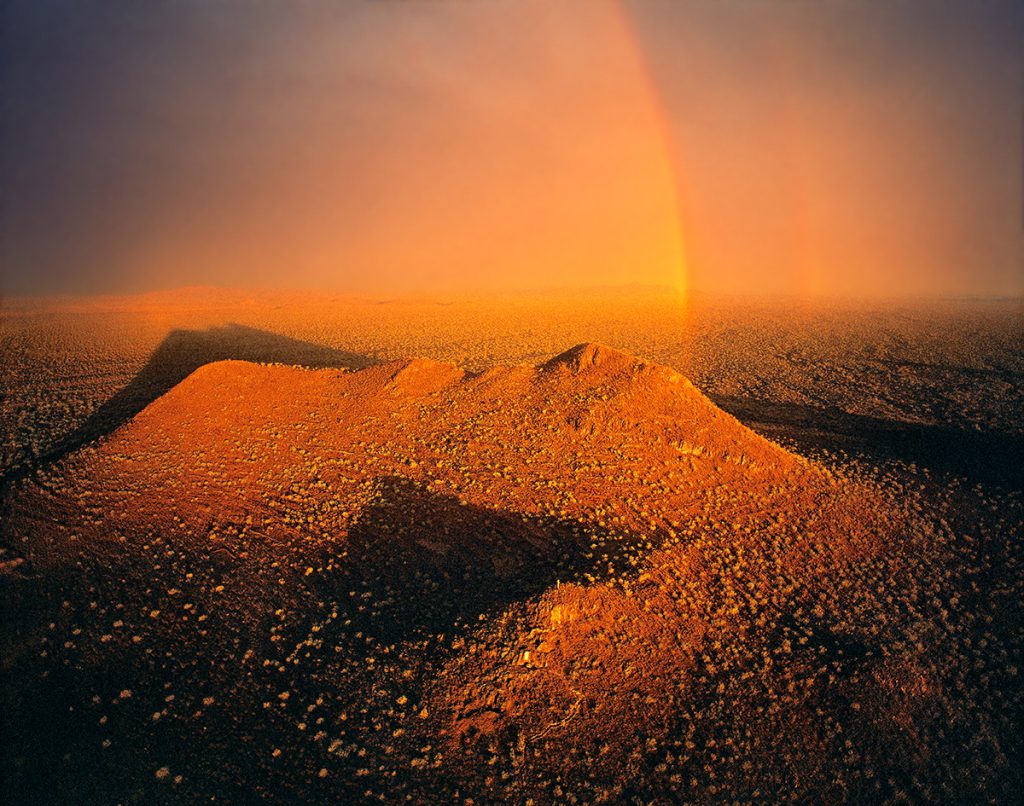
I remember a survey I was doing in Mexico, and all of a sudden there was this church in the middle of a cornfield. Only portions of it were left, but you could see the altar and the ceiling behind it. The walls were beautifully painted in a blue and covered with stars. And it immediately struck me how fragile the past is, and how easily it disappears into the future, even when you live with it. And it struck me how the past is ever present in most places…
—Teresita Majewski, director, History Department, Statistical Research, Inc.